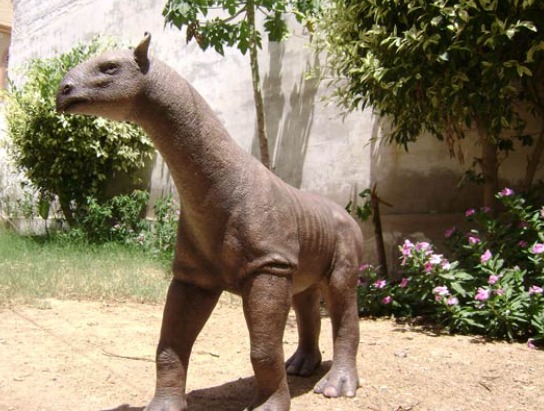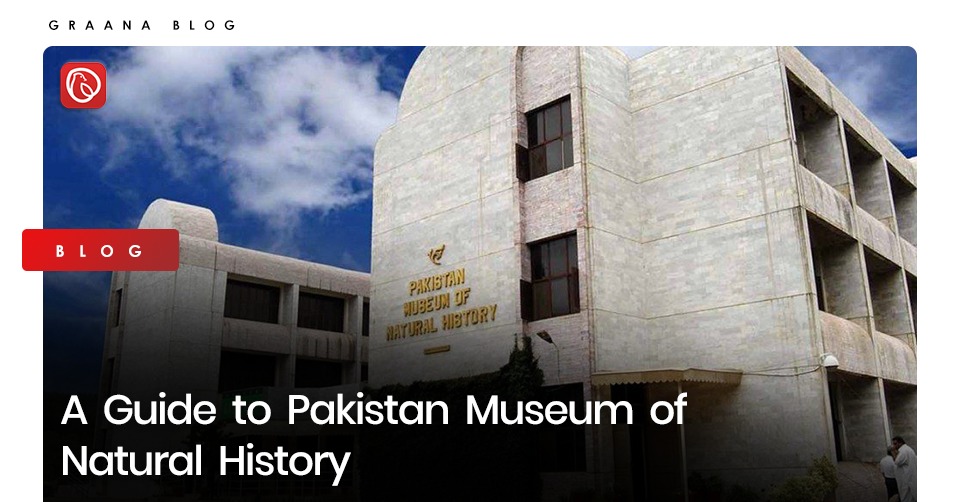The Pakistan Museum of Natural History is a prominent scientific and cultural institution in Islamabad, with a number of exhibits with sizable historic and scientific collections. Located in Shakarparian, it is definitely worth a visit with its display of enormous fossils, an animated solar system exhibit and much more.
Graana.com has prepared a comprehensive guide on Pakistan Museum of Natural History to help you plan your visit.
A Brief Overview of the Pakistan Museum of Natural History

The PMNH was founded by the government of Pakistan in 1976 with the support of the Pakistan Science Foundation and the Ministry of Science and Technology.
It has four main divisions: botanical sciences, zoological sciences, earth sciences and public services. More than 30 scientists currently work at the museum to research more on the natural history of Pakistan.
The division of public services is in charge of mass education and the popularisation of various natural history displays, exhibits, and dioramas. The other three divisions are involved in the collection, identification, and research activities relating to Pakistan’s plants, animals, and mineral resources
The large Blue-Whale skeleton on display at the PMNH’s entrance, the installation of a massive Baluchitherium model, and the regular addition of more specimens to the exhibition galleries all serve to highlight the significance of Pakistan’s natural history and the museum’s dedication to preserving it and raising awareness.
Additional initiatives include the Global Networking, Biodiversity Database, and Virtual Orientation Gallery.
Location of Pakistan Museum of Natural History
The museum is located inside the Shakarparian National Park, one of the most famous national parks in Pakistan. After taking the Shakarparian Interchange on the Islamabad Expressway/Faisal Avenue, you can access it via Garden Avenue.
Displays at the Pakistan Museum of Natural History
There are a number of interesting and well-maintained displays at the Pakistan museum of natural history, the most popular of which are mentioned below.
Gharial Crocodile Display

The species of a giant fish-eating crocodile can be found in Pakistan’s northern River Indus. The International Union for Conservation of Nature (IUCN) has listed these as critically endangered species.
Birds Species
In this one-of-a-kind diorama, you can see replicas of most of the 650 species of birds that can be found in Pakistan.
You’ll get to view all of them in their natural habitats, including the small hummingbird, the Peregrine Falcon, and the Chukar Partridge.
Solar System Display at Pakistan Museum of Natural History
This animated exhibit offers information about the planets, asteroids, and comets that come together to make up the solar system.
Trophies of the Extinct Animals
In Pakistan, there have been numerous species that were hunted to extinction. This one-of-a-kind exhibit aims to increase awareness of the impact of human behaviour on biodiversity. It has 36 trophies of 18 different species of hoofed animals, many of which are now endangered.
Skeleton of Blue Whale

As mentioned earlier, visitors are greeted at the entry by a large blue whale skeleton. The largest animal to have ever existed, it could be once found in every ocean. Due to the species’ rapid decline, however, it is now an extinct animal.
Fish Pond
Additionally, there is a fish pond on the property that is home to over 250 different species of fish. This is especially popular among kids, who enjoy watching them swim and splash around in the water.
Lotus Pond
A lotus pond can also be found at the museum. The white and pink flowers add to the aesthetic appeal of the place.
Rock Garden
The rock garden provides information on the different types of rocks that can be found in Pakistan. Rock specimens from areas like Swat, Hazara, Kirthar Range, Chitral, Salt Range and others are on display here.
Baluchitherium

This extinct animal Baluchitherium was a hornless rhinoceros that lived over 30 million years ago and was one of the biggest creatures to ever roam the planet.
Its name is derived from the words Baluchi, which stands for Balochistan, and therium, which means beast. This is due to the fact that it was first uncovered in Balochistan’s Bugti Hills. The creature was reportedly about 18 feet tall. In PMNH, a life-size model is on display.
An Exhibit of Whale Shark

The whale shark is the biggest fish in the world. Being a threatened species, its numbers are rapidly dwindling. It is over 40 ft long and is known as a whale shark because of its size and feeding habits.
The exhibit was about 50 years old, with a weight of almost 16 tonnes, when it was discovered dead on the coast in the year 2012. Eventually it was mounted at PMNH with help from the United Nations Educational, Scientific, and Cultural Organisation.
Display of Earthquake
You may stand on the trembling ground and feel what it’s like to experience an earthquake in this animated exhibit. Aside from the information on safety measures, this section also provides data on historical earthquakes from all over the world.
Galleries Found at the Pakistan Museum of Natural history
Following are some of the most-visited galleries at the Pakistan Museum of Natural History:
Bio-Gallery
Displays of animals, birds, and plants in their native environments can be found here.
Tethys Gallery
This gallery features images of Pakistan’s Salt Range, along with rocks and minerals that have been discovered there. A number of fossilised rocks are also on display.
It also includes a 3D replica of the Khewra Salt Mines, which is sure to persuade both residents and visitors from other countries to visit Punjab’s most popular tourist hotspot.
Eco Gallery
The Eco Gallery focuses on the evolution of rocks as well as the lifecycle of plants and animals. It displays animal food chains and geological formations. It even features a deodar tree trunk with rings indicating its age.
Gemstones Gallery
This gallery features all the naturally occurring diamonds that can be found in every province of Pakistan. Both the diamonds’ unpolished and polished forms are on display here. Garnet, emerald, ruby, quartz, and aquamarine are some of the most common gems.
Palaeo Gallery
This exhibit is popular among both historians and children as it features fossils of ancient animals. The oldest fossils date back 650 million years. In the middle of this exhibit, there are full bones of an elephant and giraffe on display as well.
Virtual Orientation Gallery
This interactive exhibit is the museum’s latest addition, which primarily aims to draw in more young visitors. Children can play games in creative layouts or take a virtual tour to learn more about PMNH.
Timings of Pakistan Museum of Natural History
| Months | Timings |
| April – November | 9:30 am – 8 pm |
| December – March | 9:30 am – 5:30 pm |
Take note that the staff has a lunch and prayer break from 1:00 pm to 1:30 pm every day. On Fridays, the prayer break is longer, from 12:45 pm to 2:15 pm.
To avoid crowds when you are visiting the Pakistan Museum of Natural History with your family or friends, you can reserve your specified time slot in advance.
Contact Number: 0334-5524915
For more guides on top tourist places in Islamabad, visit the Graana blog.




